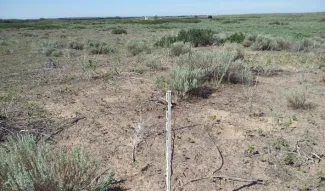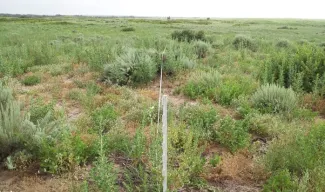The old adage that a picture is worth a thousand words is certainly true for me. In a world that is constantly changing, pictures can capture changes in habitat over time and help guide management decisions. They can also track and monitor habitat restoration or management activities. As we adapt our management to target a particular habitat type or species, pictures can provide important records, especially when coupled with weather and population data.
The use of pictures to record habitat change is called photo point monitoring. The process is easy and inexpensive, after all, it only takes a few seconds to snap a picture. However, to ensure photo points work for you there are a few simple rules:
Establish Photo Points
Identify elements of the habitat you are most interested in monitoring and establish camera points for each. Give each photo point a unique identification and record their location on a map, with GPS coordinates, or with a permanent marker such as a post.
Establish a Field of View
When setting up photo points, make sure you are able to capture the scene within a camera’s field of view. Some choose to shoot photos from each monitoring point in the same direction to avoid confusion. However, directions of photos can be tailored to each point so long as you record the direction the photo is to be taken. If details like plant heights or cover are important, consider placing a sized object, such as a yard stick, in the photo.

Spring 2014

Spring 2015
Decide When to Take Photos
The frequency of taking photos is dependent on what you are wanting to record. If you wish to record vegetation establishment or changes within a season or year you could take photos weekly, monthly, or seasonally. For long-term monitoring, annual photos might suffice. If photos are to be taken annually, determine what season best represents what you are trying to record. For example, if quail are of interest, spring photos might help record nesting cover conditions. When taking photos annually, it is important to take them during the same time each year. As a general rule, we attempt to schedule annual photos within 10 calendar days of each other.
Cataloging Photos
The major drawback to digital photos is they can often get lost among all the other pictures on your computer or maintain a permanent residence on your camera or phone until you need to free up space, which usually results in them being deleted. Establishing a catalog in your computer is a good way to organize and track your photos, but I have learned from experience that it is wise to back everything up. I prefer printing the photos and then keeping them in a notebook with notes on weather, along with a few game camera and hunting pictures to show the fruits of our labor.
By adhering to these simple rules, photo point monitoring might help shed some light on your management efforts. I hope this information inspires you to start recording the successes of your habitat projects.